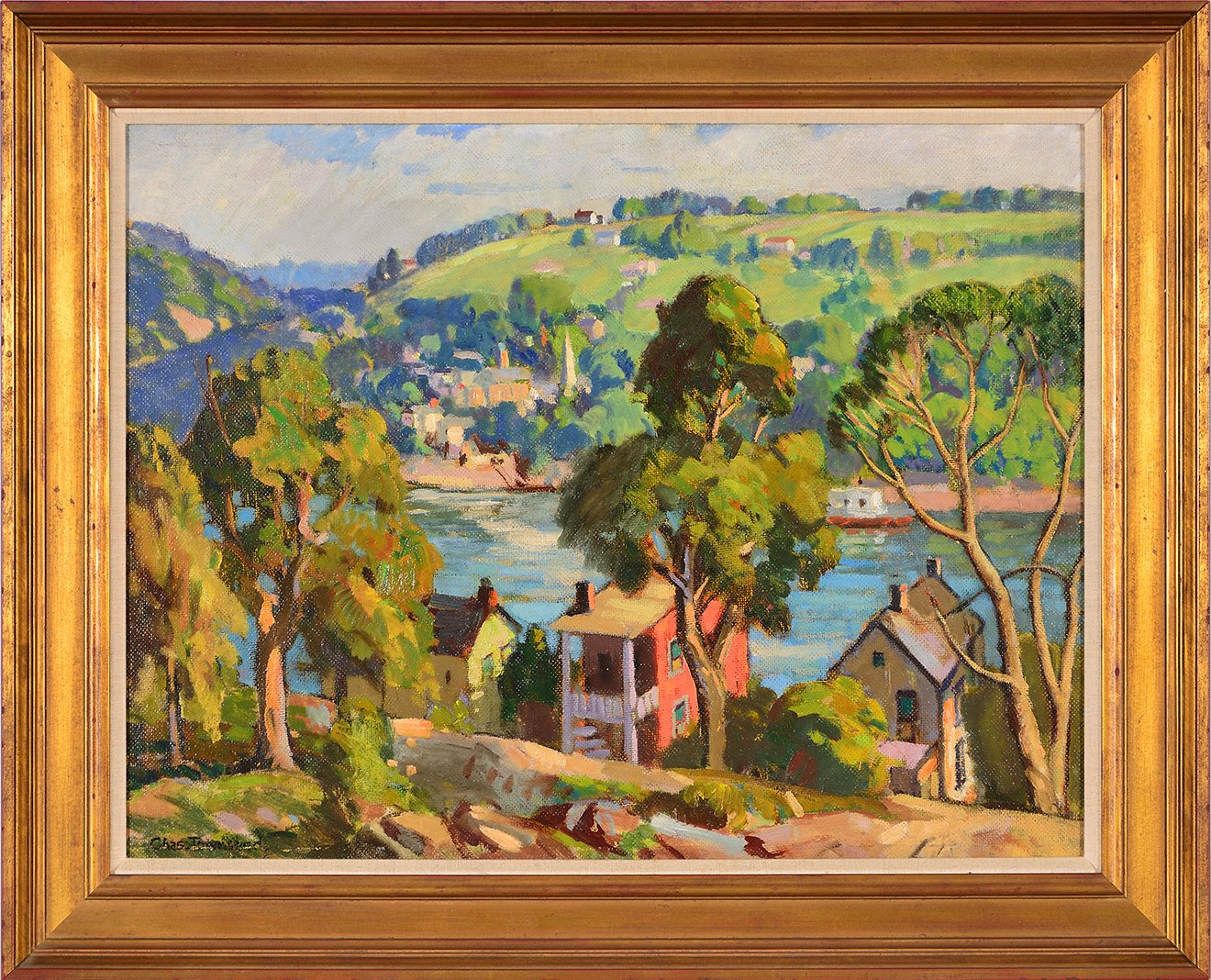Victor Holt Tatum
Victor Holt Tatum
Mt. Adams, Cincinnati
Oil on Board
16 x 21 inches
Unsigned
ID: DH2641
This following biography was researched, compiled, and written by Geoffrey K. Fleming, Executive Director, Huntington Museum of Art, Huntington, WV.
VICTOR HOLT TATUM (March 6, 1894 – July 30, 1973)
A.K.A. “V. Holt Tatum,” “Holt Tatum”
Painter, printmaker, craftsperson and inventor. Born in Cincinnati, Ohio, the son of Elizabeth T. Moore (1866 – 1952) and George V. Tatum (1863 – 1952). The family resided in Cincinnati on Findlay Street from where his father served as a postal clerk for the railroad.
His artistic leanings were present early on, and he became involved with the Cincinnati Men’s Art Club, where he created a poster design in 1916. He became a student of Charles Boebinger (1878 – 1958), the respected Cincinnati craftsperson, painter and engraver, and studied with him at the Ohio Mechanics Institute. Tatum would both paint as well as create color block prints, many of which depicted the scenery of his native Cincinnati.
Tatum was studying engineering at the University of Cincinnati when World War I broke out. During this period, he was employed as an instrument manager for the Air Nitrates Corporation in Ancor, Ohio, which made powder for the United States Military. When the United States officially entered the war, Tatum served with the Students' Army Training Corps (SATC) of the University of Cincinnati, Ohio. He was honorably discharged on December 20, 1918.
By 1920, Tatum had joined his family in moving to Somerville, Tennessee, where he was employed as a civil engineer in general practice. He returned to Cincinnati by 1930, when he appeared in the census in the household of his aunt and uncle, where he was noted as being employed as an advertising manager for a drug company – a change in profession that fed his more artistic tendencies. In 1934 he was serving as a handicrafts instructor with the Y.M.C.A. in Cincinnati.
By the time of the 1940 census, his profession was listed as “inventor,” and in his 1942 World War II draft registration he was listed as one of the owners of the Assur Printing Company, which had started as early as 1912 in Cincinnati. His brother joined him in the business, which was later known as the Assur-Flint Printing Company. He was also the owner of Claycrafters, a company which shipped clay around the country that was invented and formulated by Tatum so that it could be baked at 200 degrees, so no kiln was required. It was particularly suited for children’s art activities and for modeling.
Later, Tatum became particularly known for his interest in genealogy and heraldry, researching and creating hand-drawn and painted coats of arms for interested parties and authoring a pamphlet on the subject. He also contributed to a number of genealogical publications, including The Holt Family in Europe and America, 1248-1971 (1971). In 1965 he married fellow Cincinnatian, Anna Hilda Brinkmann (1896 – 1986), in Florida.
Victor Holt Tatum died in Cincinnati, Ohio on Monday, the 30th of July 1973 at the age of seventy-nine years. He was buried in Spring Grove Cemetery in Cincinnati, Ohio.
As an artist, Tatum’s work runs the gamut from fine oil paintings and color block prints, including silkscreens, to his painted coats of arms and clay creations. While it is clear that Tatum did exhibit his works (based on works with partial exhibition labels), exactly where and how often remains a mystery. His works are fairly rare, with only and handful of paintings and prints appearing on the market in recent years. His known prints and paintings appear to exclusively depict the cityscape of his native Cincinnati.
Tatum’s works are not known to be in any public collections at present, but reside primarily in private collections throughout the United States.
Source:
Researched, compiled, and written by Geoffrey K. Fleming, Executive Director, Huntington Museum of Art, Huntington, WV. , June 22, 2021





